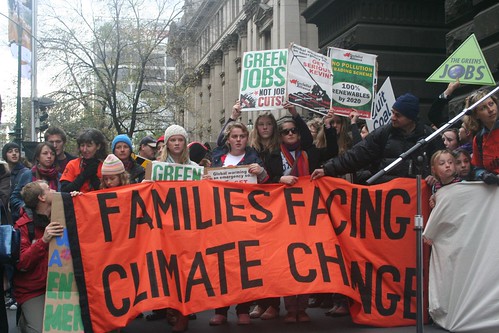
As the world, at least most of the countries in the world, express concern and even regret over the failure of the Conference at Copenhagen to come to a meaningful conclusion the Saudi Arabian chief negotiator at the talks expressed Saudi Arabia’s glee and satisfaction that the Copenhagen Conference failed to take any positive steps towards meeting the most important challenge that civilization has ever met. Mr. Mohammad Al-Sabban went further as to predict that the world seems to be heading towards a stalemate on the question of anthropomorphic global warming, AGW. Mr. Al-Sabban proceeded on an interview on the BBC to predict that the action on climate change will become similar to that on the Doha round of the WTO. The WTO members have been engaged in negotiations for the past ten years with no resolution in sight.
It is shameful that a country takes pride in the fact that it is not likely for the world community to make any progress on the climate change issue for at least the next ten years and furthermore Saudi Arabia is proud of its record on AGW because it was essentially the work of a China-Sudan-Saudi Arabia cabal that sank the Copenhagen Conference. Saudi Arabia’s obstructionist role in Copenhagen earned it the moniker the” most likely villain in the awkward squad”.
When the world was initially presented with the problem of AGW, many countries, institutions , scientists and individuals were skeptical until the world scientific community has practically united in adopting the view that human activities are the culprit behind climate change. It has been estimated by the scientific community that any change greater than 2 degrees Celsius will have profound global catastrophic implications that range from disease , to storms, higher ocean levels, food shortages and extinction of specie. The fact that human civilization has become a major evolutionary force can be seen in numerous scientific studies.

The Proceeding of the National Academy of Science concluded that “ Since 2000, a growing global economy, an increase in the carbon emissions required to produce each unit of economic activity, and a decreasing efficiency of carbon sinks on land and in oceans have combined to produce the most rapid 7-year increase in atmospheric CO2 since the beginning of continuous atmospheric monitoring in 1959. This is also the most rapid increase since the beginning of the industrial revolution.”
And the Intergovernmental Panel on Climate Change, IPCC, has also said that :” Warming of the climate system is unequivocal, as is now evident from observation of increases in global average air and ocean temperatures, widespread melting of snow and ice and rising global average sea level. Observational evidence from all continents and most oceans shows that major natural systems are being affected by regional climate changes, particularly temperature increases.”
In light of all the scientific evidence from all over the world that climate change is a fact , that its effects will be dramatic, that it is our duty and obligation to try to mitigate it Saudi Arabia is glad that we are not planning any action. But that position is to be expected. Would we expect the drug pusher to support measures designed to decrease drug usage? Of course not. To allow Saudi Arabia and China to have a major say in how to deal with global warming is similar to the proverbial image of putting the fox in charge of the hen house. I am not sure that Saudi Arabia and possibly all other major exporters of fossil fuels should have a say in what is to be done in order to implement strong steps that are bound to create major withdrawal symptoms but that are necessary if the addict is to be given a chance to overcome the addiction. Saudi Arabia and all the other 25 countries in its camp have prevented the global community from making any progress towards rehabilitation and sustainability by insisting that the world is flat. Such a position is demonstrably evil and unethical. But that fact that the global community allowed the "Awkward squad" to carry the day is a powerful statement about our lack of resolve. Shame on all of us.




















